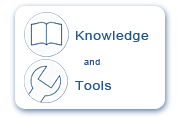|
| |
|
|
Located
between the continents of Africa and Asia, the Red Sea coral reefs cover
an area of vast natural beauty, featuring a diverse range of sea creatures.
Coral reefs are the richest underwater habitats, in species diversity
they are the marine equivalent of rainforests.
The Red Sea has 1000 species of fish and 220 of corals. But unlike, the
rainforest, all the life is on display and it’s incredibly colourful.
So these are the most colourful, crowded, vibrant and hectic environments
on Earth. |
| |
|
|
What this unit will give you
Knowledge to guide your students to complete this
project
-
In this project, students
will be creating a virtual underwater safari experience
-
They will using Kodu to
design a video game encapsulating the awe and wonder beneath
the waves
|
|
| |
 |
What this project will give your students
| Learning Objectives |
To design, write and debug programmes
that accomplish specific goals; solve problems by decomposing
them into smaller parts.
|
| Project Aim/Question |
To
research, programme and share a video game, exploring
the reefs and seabed of the Red Sea. |
| Key
Language |
Science/Geography: tourism,
archaeology, climate, diversity.
Computer Science: algorithm, debug. |
|
|
| |
| Stage 1 - Getting to know the Red Sea |
| Coral reefs exist only in
shallow tropical seas where the water is clear and sunlight can penetrate.
This is because the coral colonies have symbiotic algae within them that
provide most of their food, need for warmth and sunlight to photosynthesise
and grow. |
| |

|
What
you can do
-
With the object of your students
learning about where coral reefs exist, guide them to research
the history, wildlife and geographical features of the Red Sea.
They should identify some key underwater ‘stars’
they would like featured as characters in their Kodu game
- Their research can be collated in a OneNote notebook tab
-
In pairs, have them create a
Kodu word game based on the Red Sea coral reefs
|
|
| |

|
 The Red Sea
The Red Sea
Coral is vital to the future of the ocean as it is home to a vast
diversity of species. But rising temperatures in the world's seas
are causing the death of coral reefs due to a process called bleaching,
when corals turn white and die. As the Red Sea water is so warm
it is an ideal place to study the impact of heat on coral.
|
|
| |

|
 Reefs
Reefs
Reefs have existed since at least the Cambrian, although the familiar
coral-dominated, reefs of today are a much later arrival. A coral
reef is much more than old rock lying on the sea bed. An intricate
structure, complex set of relationships and distinct zones (reef
top, reef sides, debris piles around the base) offer myriad places
for animals to live and hide, which leads to incredible diversity.
|
|
| |

|
KODU |
|
| |

|
KODU Classroom Kit |
|
| |
|
|
| |
| Stage 2 - Getting started with Kodu |
| |
|
| |
| Stage 3 - Testing and Refining |
| |

|
What
you can do
|
|
| |
| Enrichment Activities |
| |
| |
What
you can do - Literacy
Have your students create short stories
based on the characters in the exploration video game the Red Sea.
|
|
| |
| |
What
you can do - Design and Technology
- Your students could build 3D models of
their game’s landscape
- You may choose for them to produce cover designs that can be
used to package games
|
|
| |
| . |
| |
| |
Reflection
If children struggle to visualise their games,
give them time to explore existing Kodu worlds.
Give students with literacy
difficulties video and audio sources to aid in their research.
More able programmers could
use Project Spark, instead of Kodu,which involves a greater level
of complexity.
|
|
| |

|
Project
Spark
Project Spark is a powerful, yet simple way
to build and play your own worlds, stories and games.
Experience the ultimate interactive playground, delivered as a free
digital download with many options for enhancing your creative experience.
|
|
| |
|
|
|
| |
|











